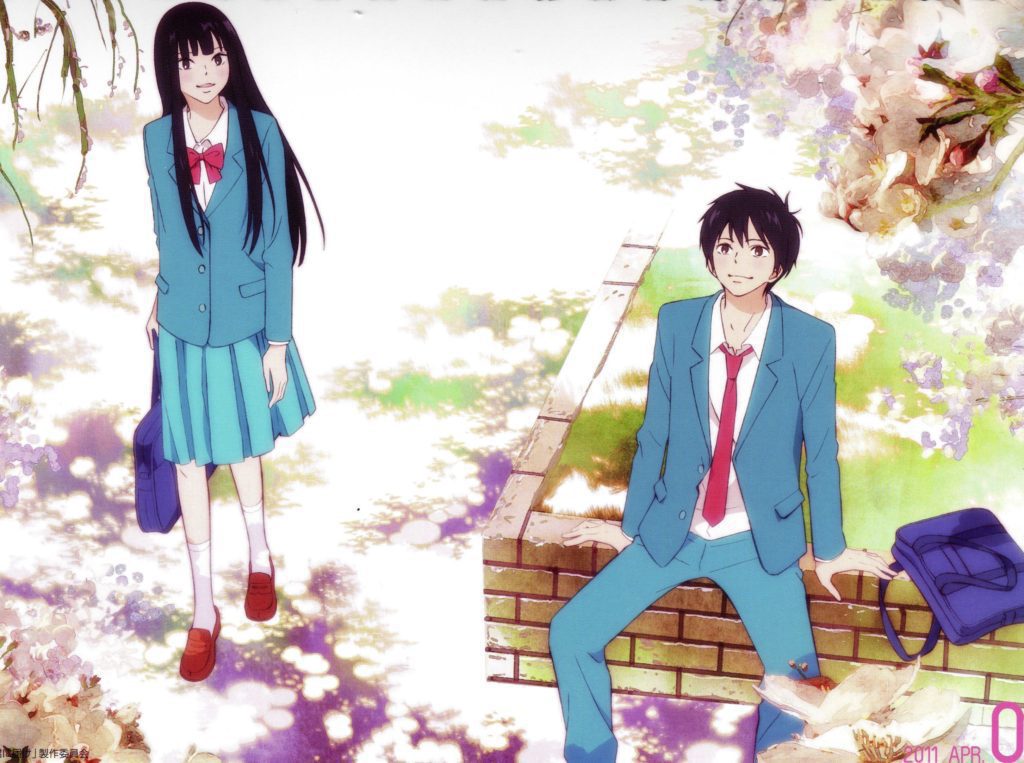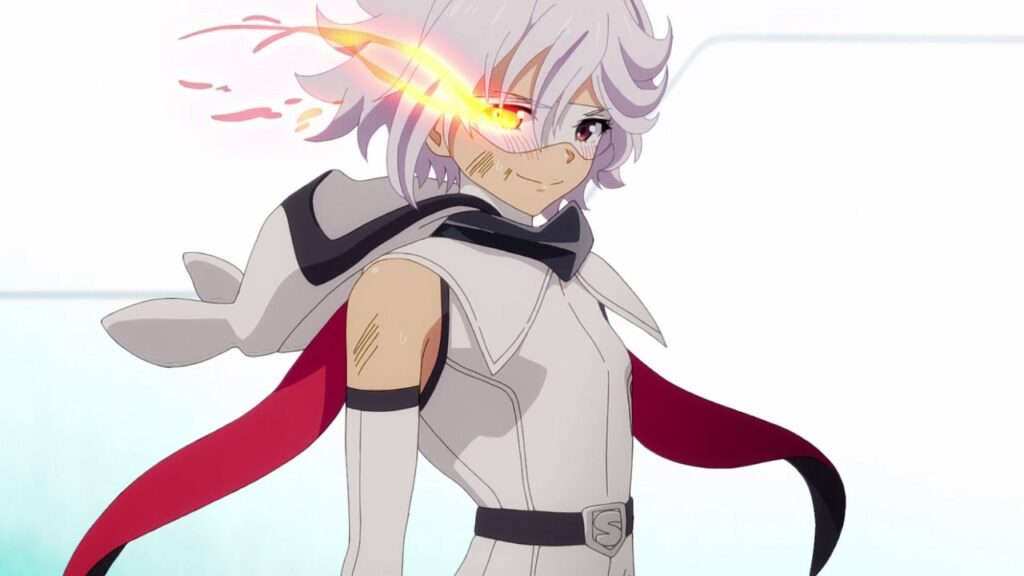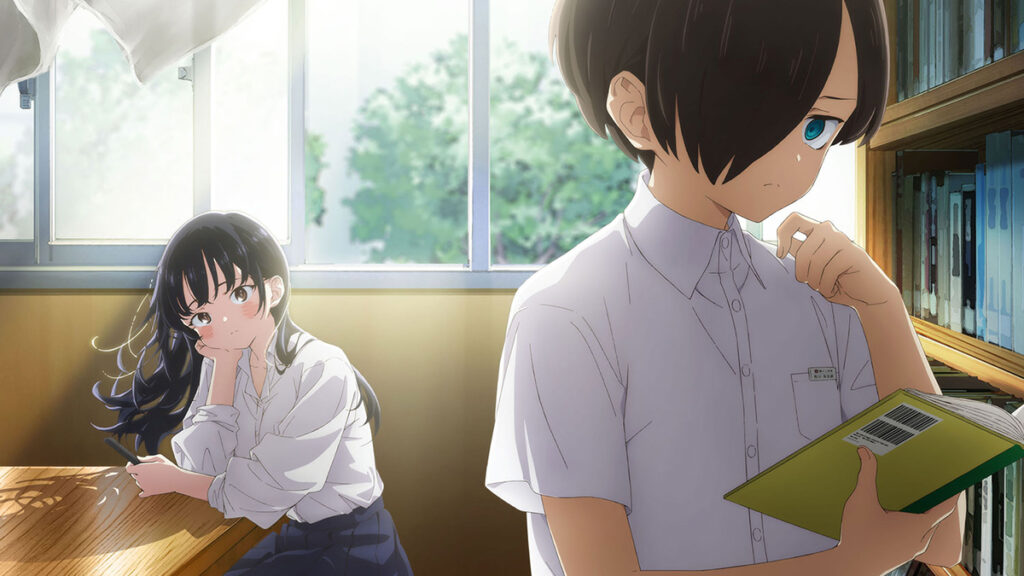Quiet and relatively timid, Sawako Kuronuma is misunderstood by her classmates. Due to her long black hair and shyness, they have taken to calling her Sadako, the ghost girl from The Ring.
Longing to make friends, she is drawn to Kazehaya Shouta, the most popular boy in school and his refreshing personality. However, when Kazehaya starts talking to her, Sawako’s lonely world begins to open up.
Slow burning to an occasionally frustrating degree, Kimi Ni Todoke offers sweet romance, but with a more poignant story of acceptance and growth that steals the show. If you are looking for more anime recommendations like Kimi ni Todoke, then head on down below.
Anime Like Kimi Ni Todoke
For Fans of Unpopular Person, Popular Person Romance
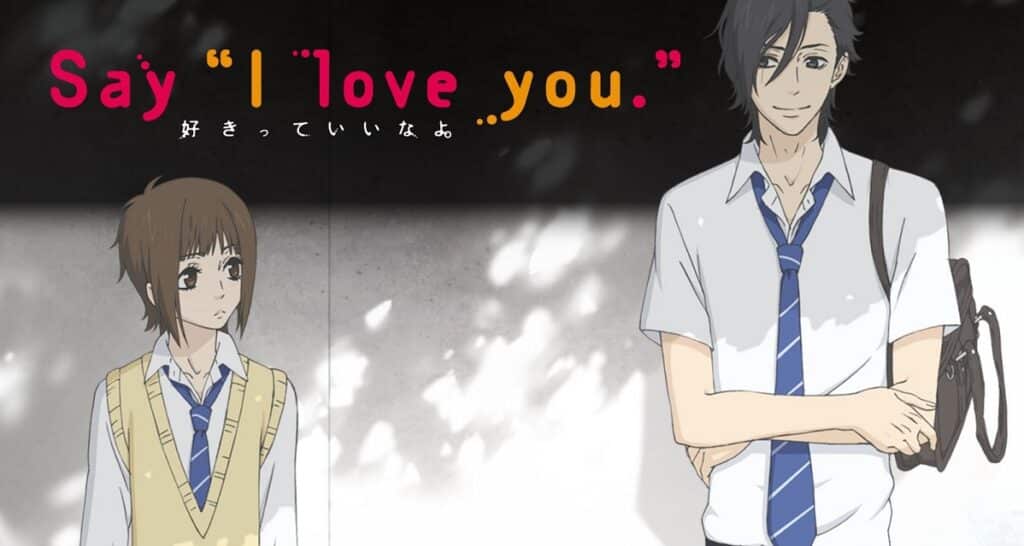
Say “I Love You”
After a traumatic incident in her past, Mei Tachibana swore off making friends, deeming all people as untrustworthy.
While her quiet life seems to be going quite normally, her core as an introvert is shaken by a few chance encounters with the popular Yamato Kurosawa.
Similarities Between Kimi ni Todoke and Say “I Love You”
- Unpopular girl has a clandestine meeting with the popular boy
- The popular boy takes a clearly romantic interest in the girl
- Their connection helps the girl make friends with other side characters who have their own personal/romantic sub-plots.
- Love rivals pop up
Differences Between Kimi ni Todoke and Say “I Love You”
- Say I Love You is a less wholesome, more romance-focused Kimi ni Todoke.
- The unpopularity of Sawako comes from her appearance and misunderstood actions. In Say I Love You, the female lead actively pushes other people away due to past trauma.
- The male lead in Say I Love You is more assertive with his affections.
- As romance moves faster in Say I Love You, the series uses love rivals for both the female and male lead to contrive some drama.
- The side characters are less fleshed out in Say I Love You.

Horimiya
Although lauded for being likable and intelligent, Kyouko Hori hides the fact that she has to take care of her brother and the housework because her parents are always working.
Izumi Miyamura, on the other hand, is seen as a brooding, bespectacled otaku. Outside of school, he sports tattoos and nine piercings.
By happenstance, the two outside school personalities of these two classmates meet and they get to know a side of each other they don’t show their peers.
Similarities Between Kimi ni Todoke and Horimiya
- An outcast in class meets and bonds deeply with a more popular person in class – kicking off a romance.
- Their relationship helps them both grow as people
- The manageable handful of side characters all have their own personal/romantic sub-plots going on that are explored.
Differences Between Kimi ni Todoke and Horimiya
- Horimiya reverse the roles of Kimi ni Todoke’s relationship. The boy is the unpopular outcast while the girl is pretty well-liked.
- Horimiya is more of a “they are different people at school than in private, and their private life personalities meet and make a connection” sort of romance story. By comparison, Kimi ni Todoke is the more straightforward “unpopular person connects with popular person” story.
- Horimiya moves the romance along fast so it can fill the extra time with side character stories.

The Wallflower
Four boys are offered to live in a fantastic mansion free of rent, but on one condition. They must make the girl of the house into a fine young lady.
Enter Nakahara Sunako. She loves horror movies, death, and all things gloomy, stemming from a junior high school trauma.
Blinded by all things beautiful, these four handsome men have their work cut out for them.
Similarities Between Kimi ni Todoke and The Wallflower
- Gloomy girl that looks like Sadako from The Ring attracts the attention of (at least one) beautiful boy.
- Both series are romance anime about trying to rehabilitate the girl and help her connect socially to people.
- Socially stunted female leads tries their best and fails occasionally.
Differences Between Kimi ni Todoke and The Wallflower
- The Wallflower is a story about four beautiful boys given room and board in order to rehabilitate the shut-in girl that lives there and fears beautiful people. This is a bit less wholesome than Kimi ni Todoke’s story.
- Kimi ni Todoke is tender and slow moving, The Wallflower is drama-heavy and makes the female lead seem more like a gremlin.
- The Wallflower, though it is a singular romance, does have a whole reverse harem vibe thing going on.
- The female lead in The Wallflower isn’t really making meaningful new friendships like Sawako is in Kimi ni Todoke.
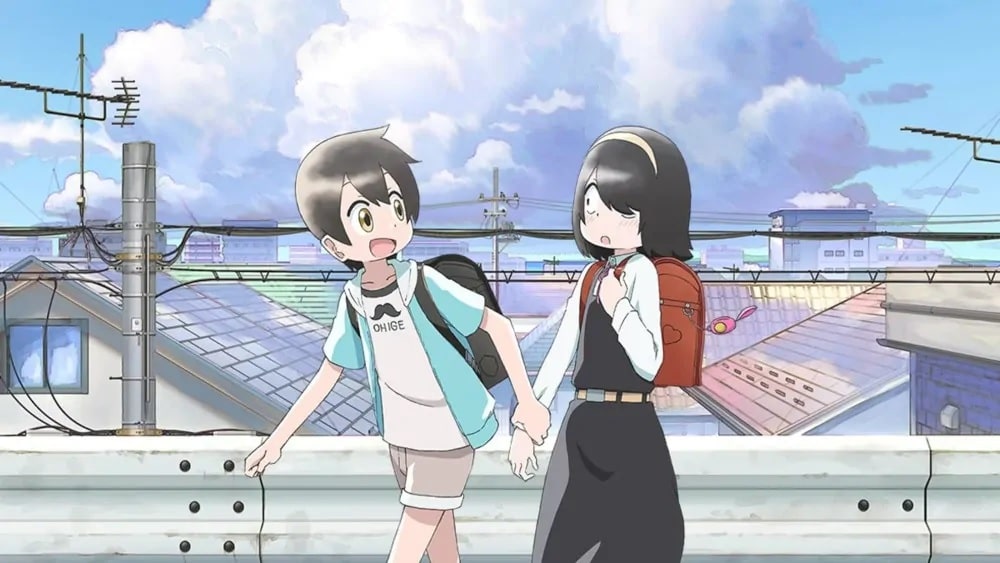
My Clueless First Friend
Akane Nishimura is a quiet girl with an intimidating gaze. As such, her classmates gave her the ominous nickname of “The Grim Reaper” and started avoiding her due to fear that they would be cursed.
However, these rumors don’t deter the new transfer student, Taiyou Takada. He finds out about her nickname and her powers and immediately tries to befriend her with no hesitation, excited to be cursed and to be friends with The Grim Reaper. His cheerful disposition and ability to make everything seem positive is just what Akane needed in her first ever friend.
Similarities Between Kimi ni Todoke and My Clueless First Friend
- A unpopular gloomy girl is adopted by an extroverted athletic boy
- The boy’s friendship with the girl is a catalyst for her to make friends as well as stops her being bullied.
- Soft, cute storytelling with wholesome, very positive coming-of-age messages
Differences Between Kimi ni Todoke and My Clueless First Friend
- My Clueless First Friend is about elementary school children, and keeps romance at a respectful arm’s length away while still being as satisfying as any romance.
- The male lead in My Clueless First Friend is more confident and even more outwardly cheerful than Kazehaya.
- The female lead in My Clueless First Friend is more self-aware of her unpopularity – and just accepted it – unlike Sawako that was sort of innocently oblivious and lonely.
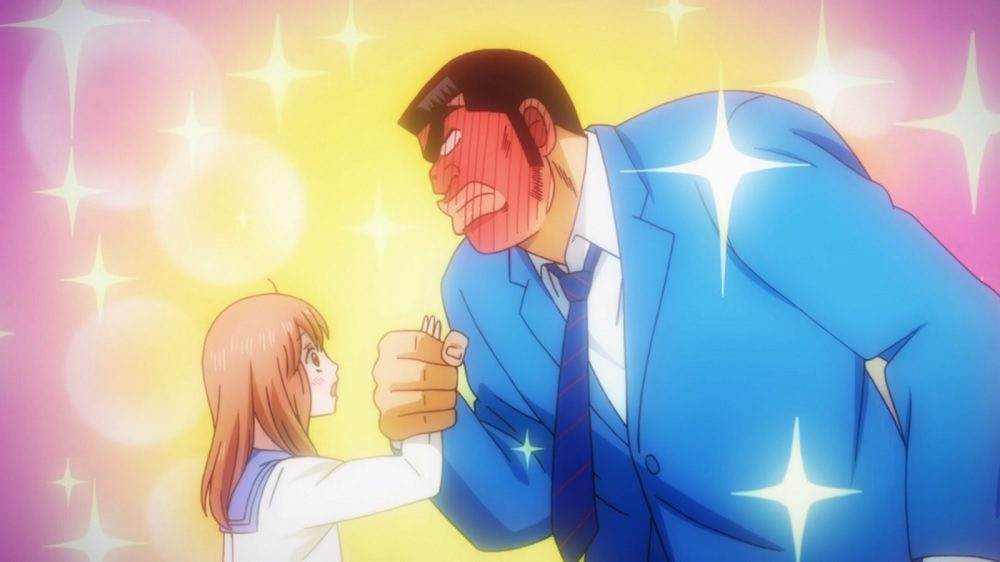
My Love Story
With his tall stature, bulky muscles, and mean face, Takeo Gouda is not exactly a hit with the ladies. Men and women alike find him terrifying, but he still tries to do the right thing.
One day he saves a cute girl from a molester on the train. When she reaches out to him again, he thinks she likes his handsome friend, but he is shocked to discover she actually likes him!
Similarities Between Kimi ni Todoke and My Love Story
- A scary-looking-but-actually-nice person starts a romance with a normal cutie.
- Soft, extremely wholesome romance and friendships
- Side characters with their own personal/romantic sub-plots that are explored
Differences Between Kimi ni Todoke and My Love Story
- My Love Story is a romance between a big, tough softie and the cute girl that he saved from a creep. This is quite different from Kimi ni Todoke, but as he scares women off with his looks, its isn’t so different.
- Kimi ni Todoke is as a much a coming-of-age/coming out of your shell story as it is a romance, My Love Story is a more focused romantic comedy.
- My Love Story is often more intense and over-the-top with its jokes and comedy whereas Kimi ni Todoke derives comedy more from grounded real situations or cuteness.
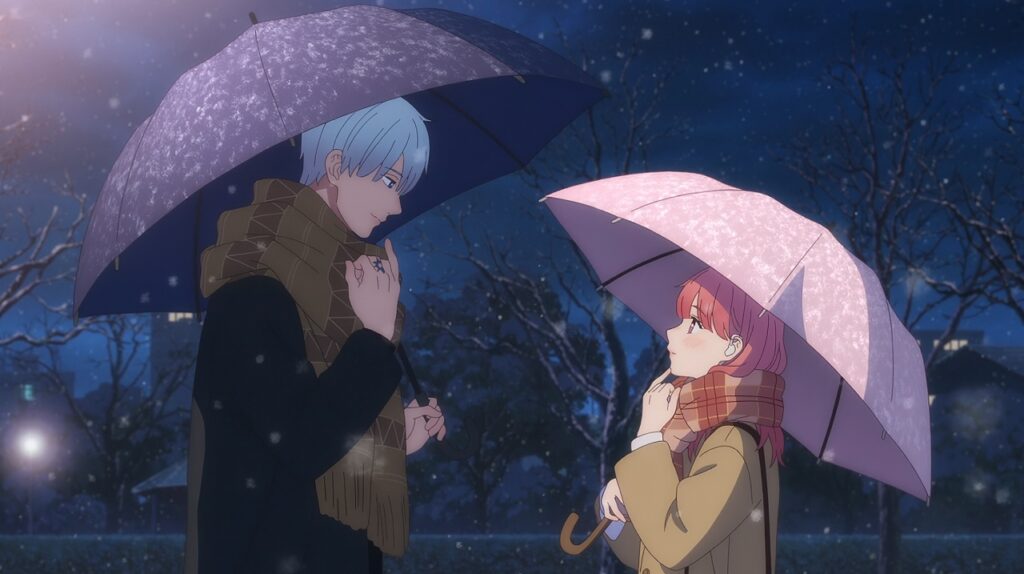
A Sign of Affection
Born with a hearing impairment, Yuki Itose is college student who rarely interacts with others because of her disability. However, when she has an awkward interaction with a foreigner on her daily commute to school, the multilingual Itsuomi Nagi steps in to intervene.
Learning of her impairment and having an interest in travel and learning various languages, soon Yuki and Itsuomi bond over his new interest in learning sign language to better communicate with her. As they spend more time together, their relationship continues to grow even deeper.
Similarities Between Kimi ni Todoke and A Sign of Affection
- Shy and isolated girls have their world expanded by a more popular boy.
- Both series put focus on the extended social circle around the couple, and the relationships forming within.
- Tender romance anime with plenty of fluffy moments.
Differences Between Kimi ni Todoke and A Sign of Affection
- A Sign of Affection follows a deaf female lead, so the isolation comes from actual disability rather than just poor social skills like Sawako.
- A Sign of Affection is a college-set romance. So it follows adults with more adult worries and sensibilities.
- Romance moves faster in A Sign of Affection
- Kazehaya from Kimi ni Todoke is pretty well-adjusted, the male love interest in A Sign of Affection comes with more baggage.
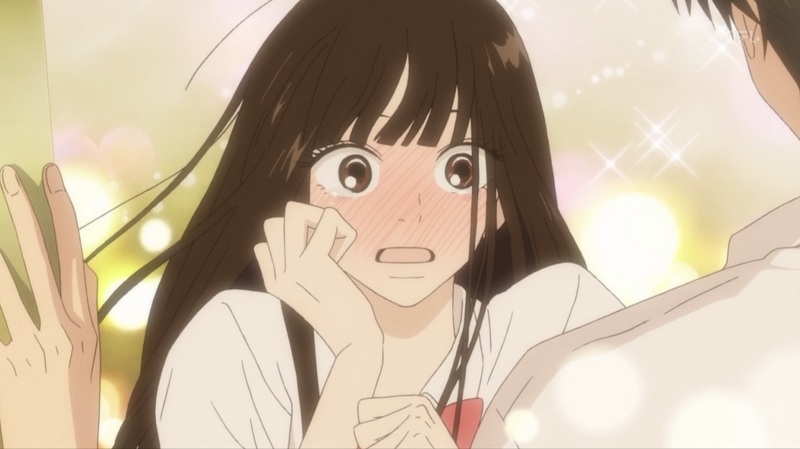
For Fans of Forming Meaningful Friendships

Skip and Loafer
In order to pursue a career in politics to make a positive change for Japan, Mitsumi leaves her rural town to go to high school in Tokyo. While she has a clear life plan for herself, she is still a country girl in a big city and ends up late and lost on her first day.
Luckily, Mitsumi is noticed by a fellow new student, Sousuke Shima, and he guides her to school. This laid-back guy is charmed by her motivated personality and strikes up a friendship with her, supporting her as she tries to make meaningful friendships with her classmates.
Similarities Between Kimi ni Todoke and Skip and Loafer
- Less socialized girl meets a more popular boy
- Both series often threaten romance with how much it is there and how little it is focused on compared to other character development.
- Both series focus on the complicated relationships and lives of a compact group of major characters.
- Both balance the story with a similar amount of cute slice of life, romance, and drama.
- The female leads are both easy to root for because they are the pinnacle of innocence.
Differences Between Kimi ni Todoke and Skip and Loafer
- Skip and Loafer follows a country girl bonding with a city boy. This is a different set up to Kimi ni Todoke’s unpopular girl/popular boy relationship, but still quite similar in dynamic.
- Kimi ni Todoke’s overall story is more focused on the romance of a primary couple while Skip and Loafer is more focused on the non-romantic character stories of the entire group.
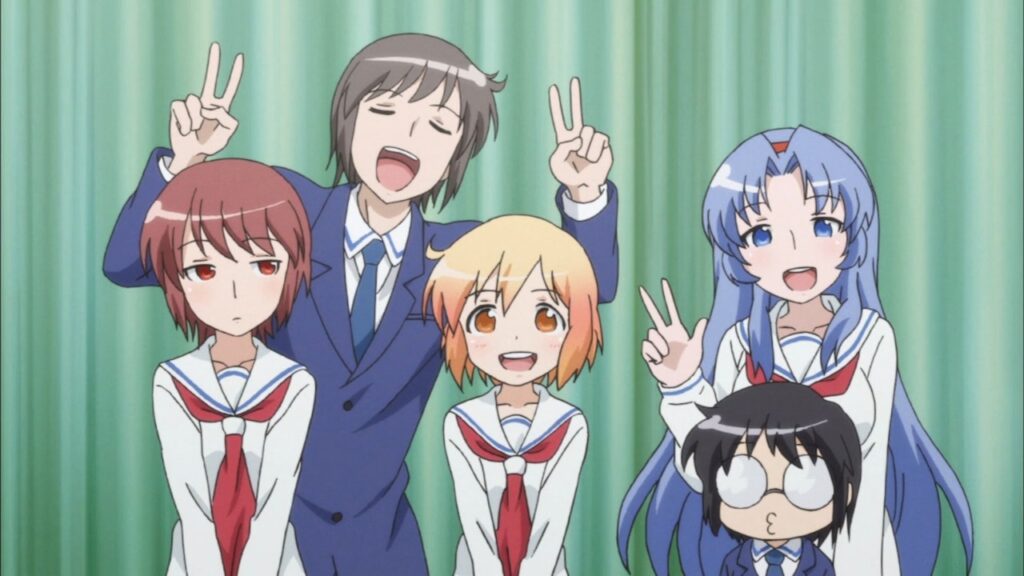
Kotoura-san
Haruka Kotoura is a school girl that can read people’s minds. Unfortunately, it has caused her nothing but trouble, eventually causing her parent’s divorce.
After she moves to a new school, she tries to avoid her classmates, but a classmate of hers finds her power not scary, but intriguing.
Similarities Between Kimi ni Todoke and Kotoura-san
- Both series feature outcast girls who have a boy take an active interest in them.
- The girl’s relationship with the boy helps the girl start to come out of her shell and make other friends.
- Both Kotoura-san and Kimi ni Todoke are as much coming-of-age stories as they are romance stories.
Differences Between Kimi ni Todoke and Kotoura-san
- Kotoura-san has a supernatural element in that the main character is a psychic that has hurt the feelings of others in the past with the power. The trauma is used for character growth.
- Kotoura-san has romance move faster than Kimi ni Todoke.
- The male love interest in Kotoura-san is an eccentric instead of a popular boy trope like Kazehaya is in Kimi ni Todoke.
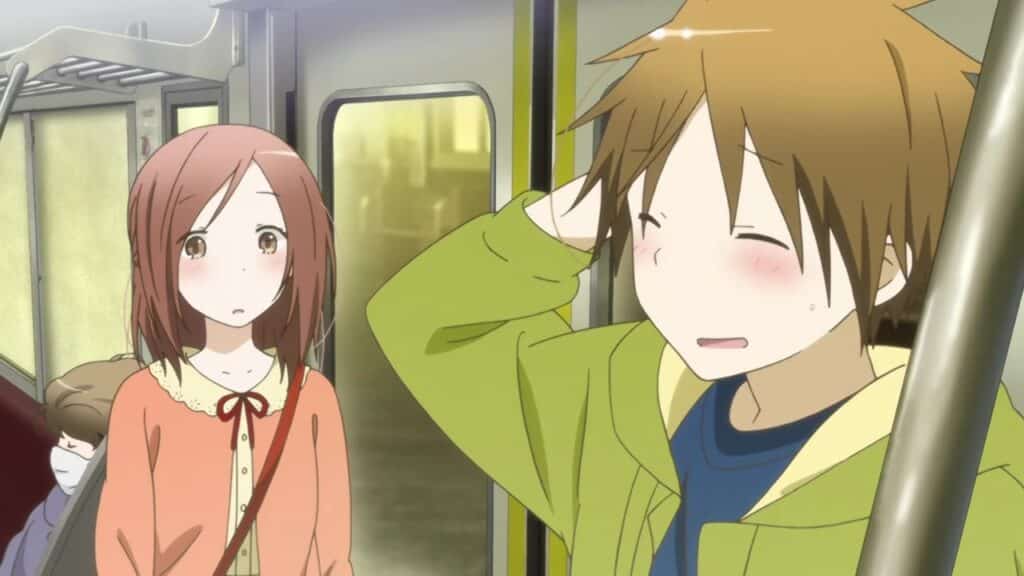
One Week Friends
High school student Hase Yuuki finds out the hard way how difficult romance can be after finding out Kaori, the girl he has fallen for, can only remember memories for a week at a time.
Because of this, she often shies away from making friends, but can Yuuki’s sheer determination help her come out of her shell for just one week?
Similarities Between Kimi ni Todoke and One Week Friends
- Both series follow cute, but still quiet and outcasted girls
- A boy takes notice of her and they become friends. Their building relationship is the catalyst for the girl to make new friends of her own finally.
- Both series have a softer, pastel-like art style to emphasize their more tender natures.
- Romance moves slowly, but for different reasons.
Differences Between Kimi ni Todoke and One Week Friends
- One Week Friends follows a female lead who loses her memories each week. This is primarily what keeps romance sluggish in One Week Friends.
- The memory loss plot also makes One Week Friends prone to more moments of drama and melancholy.
- One Week Friends is cute, but ultimately a bit more emotionally shallow than Kimi ni Todoke and its pretty touching coming out of your shell story.
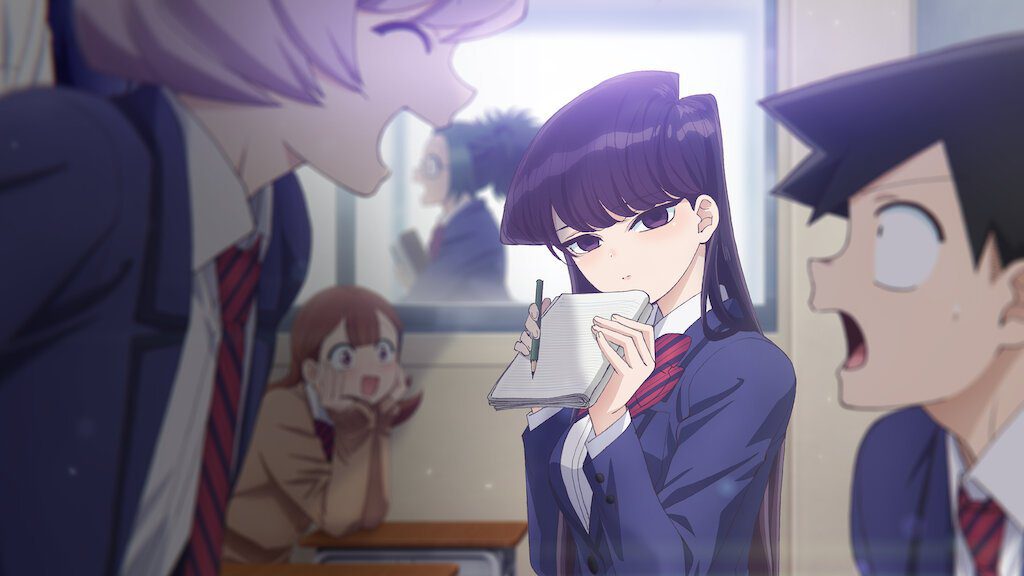
Komi-san Can’t Communicate
It is the first day for incoming freshmen at the prestigious Itan Private High School. For Hitohito Tadano, he considers himself lucky to get in and angles to not make waves during his high school career.
However, he finds himself sitting next to the beautiful, beloved, yet cold and silent Shouko Komi, immediately earning the ire of his classmates.
After a series of events leads to him being left alone with her, he discovers that she is not cold, but suffers from extreme social anxiety that prevents her from speaking. After a long conversation through writing, he wants to help her reach her goal of making 100 friends.
Similarities Between Kimi ni Todoke and Komi-san Can’t Communicate
- Both series follow cute girls with social anxiety or other social difficulties.
- Lonely girls meet a boy who helps them make friends and expand their world
- Cute comedy and slice of life, but very slow moving romance
Differences Between Kimi ni Todoke and Komi-san Can’t Communicate
- While both are romantic comedies where romance moves slowly, Komi-san Can’t Communicate is much more focused on comedy rather than just normal slice of life like Kimi ni Todoke.
- Komi-san can’t Communicate is more intense and visual with its comedy.
- The male love interest in Komi-san Can’t Communicate is a normal, if slightly unpopular guy and not a well-liked athlete like Kazehaya. Alternatively, the female lead in Komi-san Can’t Communicate is mute with social anxiety, but put on a pedestal by her peers rather than an outcast like Sawako.
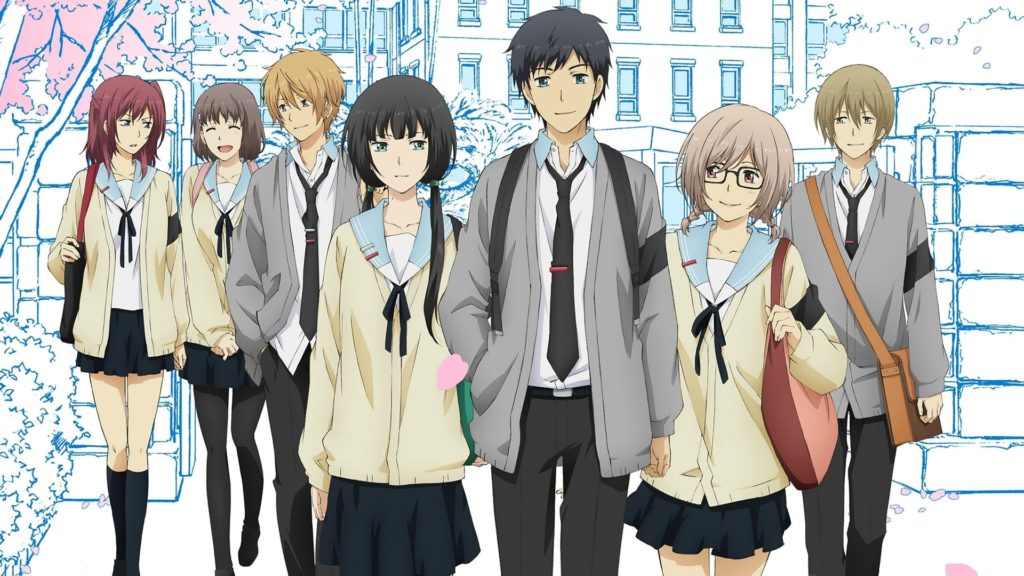
ReLife
Arata Kaizaki is an unemployed 27-year-old that has thus far been living with the financial support of his parents and part-time jobs. After leaving his first job after only three months, he has not been able to find proper work.
However, after a night of drinking with his friends, he meets a mysterious man that offers a drunk Arata a pill that will turn him 17 again so that he can redo a year of his youth, all expenses paid.
Will Arata find what he needs to live a happy life after one year in high school again?
Similarities Between Kimi ni Todoke and ReLife
- While done different ways, but both series are about socially rehabilitating someone who doesn’t know how to connect to others.
- Both series are about growing as a person first – and maybe romance later.
- Both series feature cute, but painfully slow moving main romance stories, often focusing on side character sub-plots and romance instead.
- Quiet, difficult to approach female love interests
Differences Between Kimi ni Todoke and ReLife
- ReLife is about an adult NEET being socially rehabilitated by going to high school for a year. This is very different from the more normal high school romantic comedy that is Kimi ni Todoke.
- The male lead is the main/followed character in ReLife whereas Kimi ni Todoke follows things from Sawako’s perspective.
For Fans of Slow Romance

Lovely Complex
Risa is very tall for a girl. Atsushi is very short for a boy. They are both in love with different people who actually end up dating each other.
With both their loves taken, the two form an unlikely friendship that soon turns into something more.
Similarities Between Kimi ni Todoke and Lovely Complex
- Both series introduce a cute main couple, then their romance moves slowly due to drama or side character stories.
- Both series have strong themes of learning to accept yourself.
Differences Between Kimi ni Todoke and Lovely Complex
- Lovely Complex is a height-gap romance between a tall girl and a short boy. It is the boy’s insecurity over not wanting to date a taller girl that is the biggest romantic hurdle.
- The characters in Lovely Complex are all relatively normal and not socially stunted like Sawako in Kimi ni Todoke.
- The main couple in Lovely Complex is more fun and mischievous rather than pure and innocent like Kimi ni Todoke.

We Were There
Nanami Takahashi is ready to enter her high school life and hopes to make as many friends as possible. However, she makes a fool of herself during class nominations by calling a student by the fake name a boy gave her.
This boy is the super popular Motoharo Yano who has most of the girls in their class in love with him. At first Nanami is mad, but soon she, too, begins to like Yano.
Similarities Between Kimi ni Todoke and We Were There
- Both series follow a girl that falls for a popular boy almost immediately.
- Both series use a pastel/”washed out” sort of art style to accent youthful innocence.
- The female leads are both pure and quite naive.
Differences Between Kimi ni Todoke and We Were There
- Romance moves faster in We Were There, but is often derailed by more drama than you find in Kimi ni Todoke.
- We Were There is more about a normal, but naive girl falling for a troubled popular boy with tons of baggage.
- We Were There is definitely a lot less innocent and wholesome compared to Kimi ni Todoke.
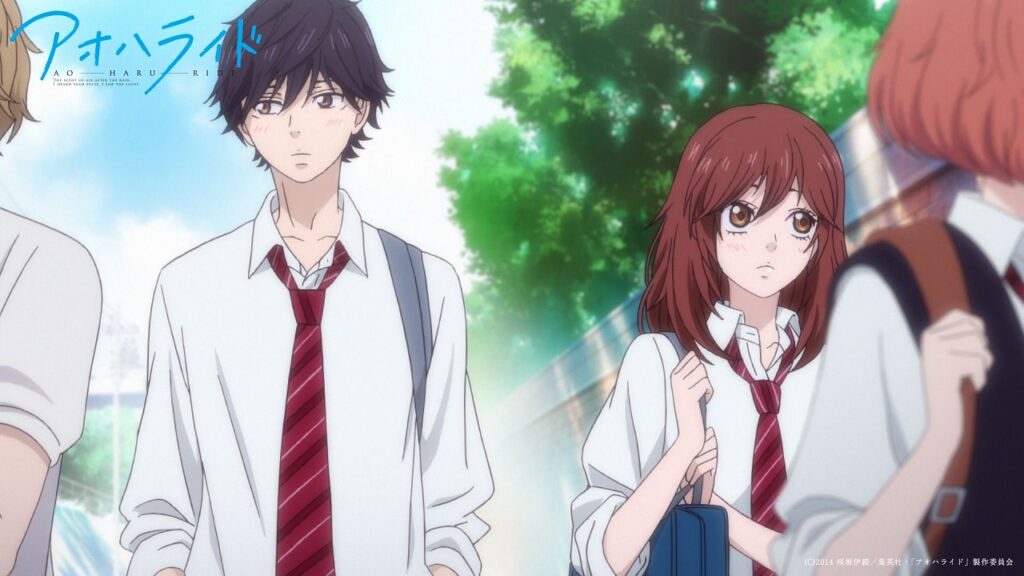
Blue Spring Ride
Futaba Yoshioka was an attractive middle schooler, popular with boys, but not with girls. It left her feeling lonely, but none of that mattered as long as her crush, Kou Tanaka, liked her.
However, when Kou moved away, Futaba decided to change herself, purposely adopting unattractive traits to be popular with the girls, but one day, Kou comes back as different of a person as she is.
Similarities Between Kimi ni Todoke and Blue Spring Ride
- Both series follow unconventional girls who have difficulties making friends.
- The female lead meets a boy who serves as the catalyst to her making meaningful friendships
- The main heroine learns to accept herself more
- Romance moves sluggishly
Differences Between Kimi ni Todoke and Blue Spring Ride
- Blue Spring Ride sets itself up a damaged male lead whose trauma is the bar preventing romance.
- The female lead in Blue Spring Ride pretends to be a tomboy so boys won’t hit on her and her female friends won’t get jealous. This is, obviously, a very different situation compared to what Sawako is going through.
- Blue Spring Ride is less wholesome and is more focused on complicated feelings like jealousy and grief.
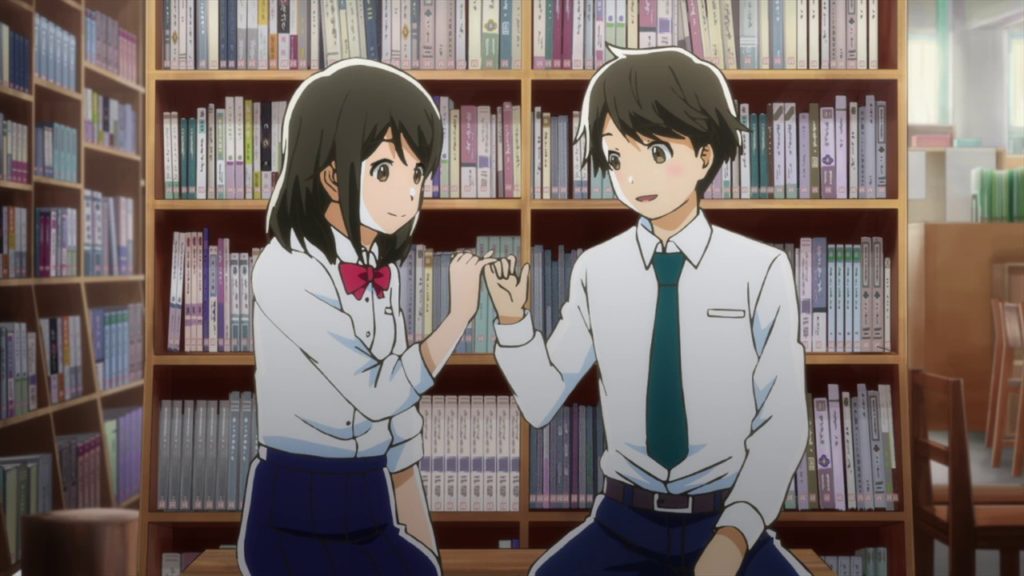
Tsuki ga Kirei
For the first time in their third year, Azumi and Mizuno were put in the same class. Initially, they are nothing more than classmates, but continued exposure sees them grow progressively closer.
As the year goes on, the pair and their classmates must come to face themselves as they mature emotionally.
Similarities Between Kimi ni Todoke and Tsuki ga Kirei
- Both are romance anime told using a similar soft pastel art style to accent the youthfulness of it.
- A shy boy and girl and start building a romantic relationship.
- Both series handle various coming-of-age topics in their non-romantic plot
Differences Between Kimi ni Todoke and Tsuki ga Kirei
- As Tsuki ga Kirei is a full story told in one season, romance moves faster, but has more relationship drama.
- Kimi ni Todoke is more about Sawako coming out of her shell, Tsuki ga Kirei is more focused on the relationship and troubles of growing up.
- Tsuki ga Kirei is a middle school romance, which comes with different difficulties.
Do you have more anime recommendations like Kimi ni Todoke? Let fans know in the comments section below.
